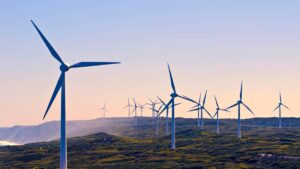Power Up: US$80 oil proving a tough nut to crack, Uruguay’s the renewables champion

US$80 per barrel oil is proving hard to crack, at least for extended periods of time. Pic: krblokhin via Getty Images
Crude oil’s ability to stay above the US$80 per barrel mark has proved to be short lived with the Brent benchmark, which is used to price over three-quarters of the world’s traded oil, only breaking past the barrier briefly in recent weeks.
While OPEC and its allies – namely Russia – had sought to prop up prices by committing to a 2.2 million barrel per day cut in the first quarter of 2024, their efforts have run straight into ongoing concerns about the state of the global economy and fears about the state of oil demand.
Matters were not helped by The American Petroleum Institute’s latest report, which indicated that crude oil inventories in the US had risen by 1.837 million barrels for the week ending 22 December 2023.
This follows a 939,000bbl inventory build in the prior week and takes the net build in US crude oil inventories to just over 21MMbbl to date this year, which certainly hints about the state of oil demand.
Despite the US Energy Information Administration forecasting earlier this month that demand will increase, there is speculation that things aren’t quite as rosy for the crude oil sector.
Euronews has flagged that global economic indicators do not look very strong and that the probability of a recession remained high, which in turn indicates that there is considerably more downside potential to oil prices than upside in 2024.
Uruguay the poster child for renewables
Moving on to green energy, Uruguay has emerged as the poster child for renewables with the South American country now producing anywhere from 90% to 95% of its electricity from an array of ~50 windfarms.
The achievement is significant as Uruguay has the highest GDP in South America with a correspondingly higher standard of living.
Higher standards of living are accompanied by higher levels of electricity use, which makes its ability to rely on renewables for the vast majority of its power usage even more impressive.
That this was done in about 15 years – following the pressure brought about by the 2008 oil spike – just serves to highlight its achievements further.
Can Australia emulate this performance? And how?
Speaking to the Guardian, Ramón Méndez Galain – the architect of Uruguay’s renewables revolution – said that a “strong national narrative” is needed to make it work.
He noted that even if people didn’t believe in climate change, the message that renewables were the cheapest option and not dependent on fluctuating oil prices needed to be front and central.
This is certainly achievable, we just need to have the political will and the right messaging.
Related Topics

UNLOCK INSIGHTS
Discover the untold stories of emerging ASX stocks.
Daily news and expert analysis, it's free to subscribe.
By proceeding, you confirm you understand that we handle personal information in accordance with our Privacy Policy.








